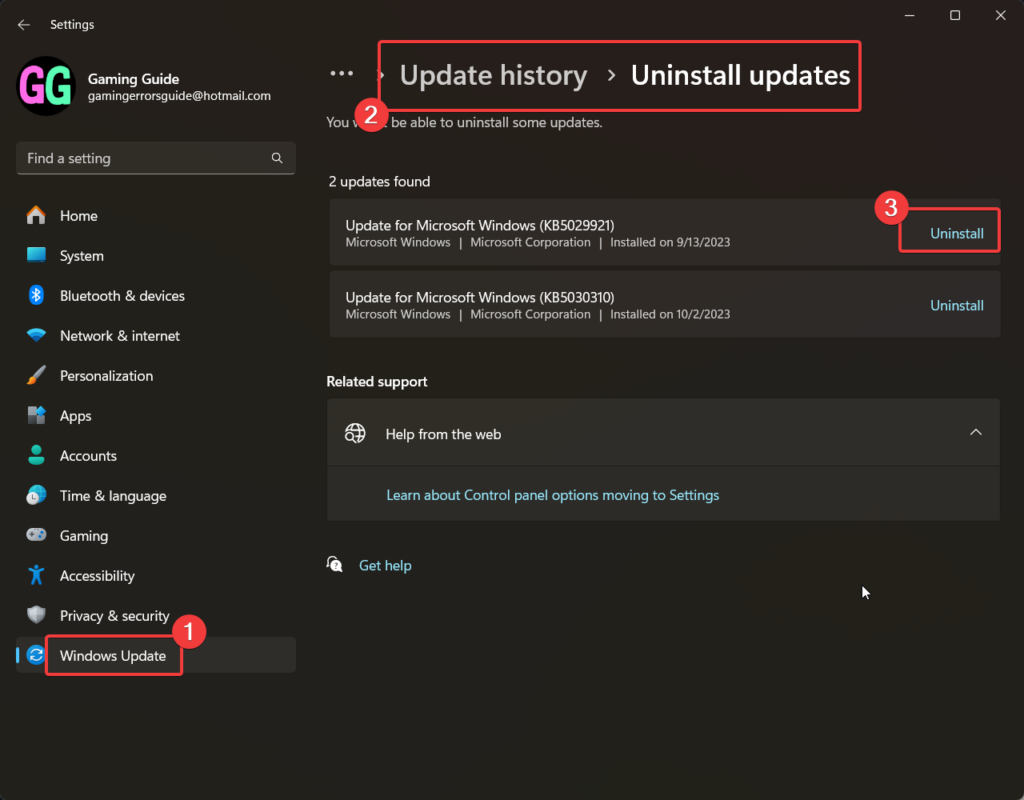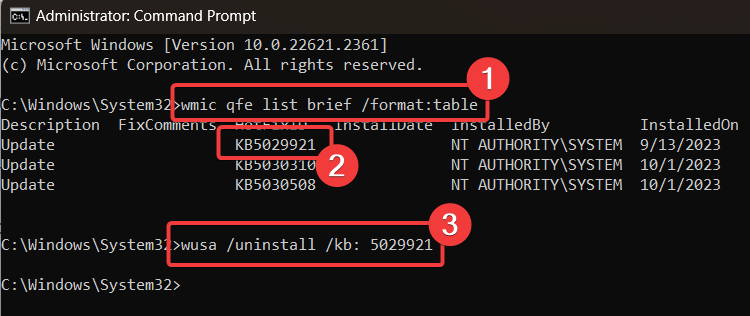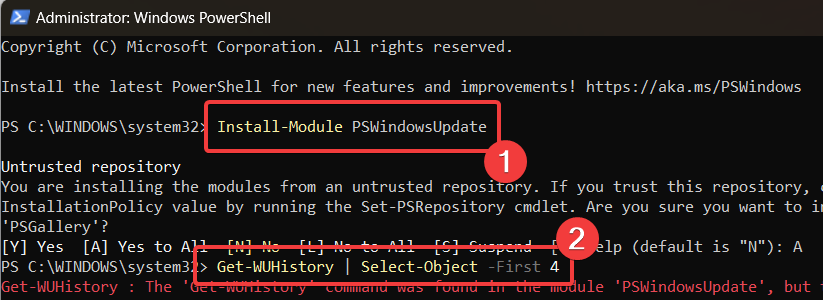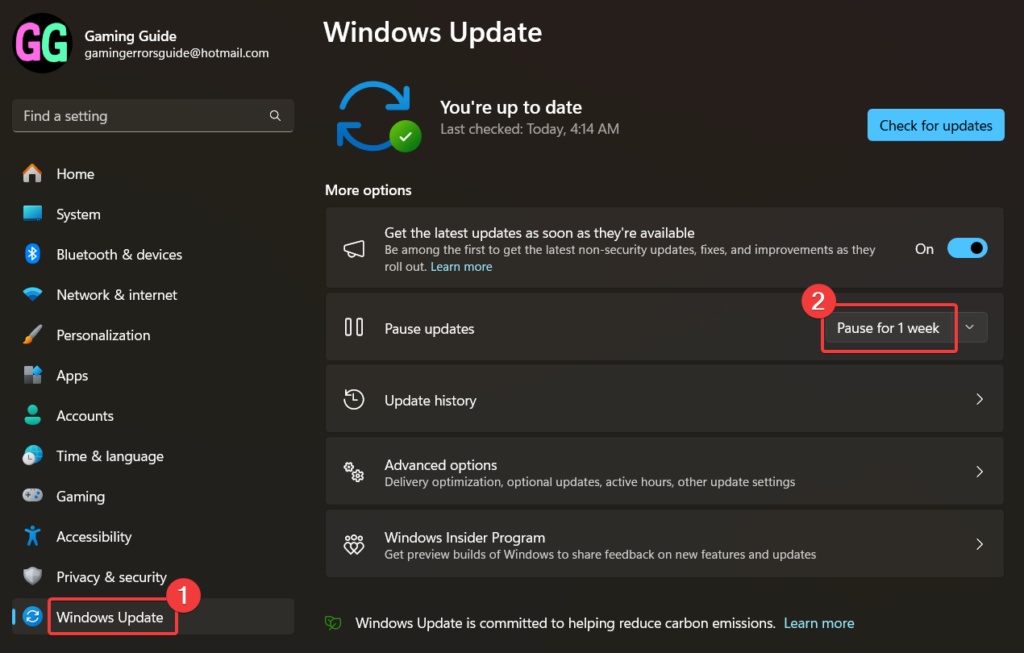KEY POINTS
- To uninstall updates in Windows 11, open Start Menu > Settings > Windows Update > Update history. Settings, select “Uninstall”, and click “Uninstall” to remove the problematic patch.
- It is also possible to manually remove updates in Windows 11 using Command Prompt and other terminal options, such as PowerShell.
- To uninstall updates in Windows 11 manually using Command Prompt, you just have to type wusa /uninstall /kb:KBNUMBER and replace the KB number with the actual package number.
Windows Updates are essential for pushing new features to the system, fixing known errors, and installing security updates. However, if Windows Updates were perfect in fixing all problems, Windows systems would be perfect by now (which is far from true).
At times, Windows Updates cause new problems in the system. In this case, you might want to uninstall the Windows Updates. After uninstalling the update, you can wait for Microsoft to fix issues with the current update and then uninstall the revised update later.
A troublesome Windows Update can cause serious problems to your computer, including Blue Screen of Death errors, crashes, dysfunctional drivers, etc.
However, every update pushes security updates to your computer. If you uninstall an update, you will also uninstall the latest security update.
Uninstall Windows Updates through Windows Settings in Windows 11
To uninstall Windows Updates through Windows Settings, use these steps:
- Right-click on the Start button.
- Select Settings from the menu.
- Go to the Windows Update tab in the left pane.
- In the right pane, select Update History.

- Scroll down and click on Uninstall updates.
- Click on Uninstall corresponding to the latest update, and then click on Uninstall again to confirm it.
Uninstall Windows Updates through Command Prompt in Windows 11
To uninstall Windows Updates through Command Prompt in Windows 11, use these steps:
- Search for Command Prompt in the Windows Search bar.
- Click on Run as administrator in the right pane to open the elevated Command Prompt window.
- In the elevated Command Prompt window, enter the following command:
wmic qfe list brief /format:table
- This will display the list of the latest Windows Updates with their appropriate KB number.
- Note the latest KB number.

- Enter the following command in the elevated Command Prompt window:
wusa /uninstall /kb:KBNUMBER
- For example, if the latest KB number is KB5029921, then the command will become:
wusa /uninstall /kb: 5029921
- You can select Yes for confirmation, and Windows will uninstall the update.
As you can see, every procedure in Windows can be executed through commands in the Command Prompt window.
If you cannot uninstall the latest update through Windows Settings, the Command Prompt method will be very helpful for you.
Uninstall Windows Updates through Windows PowerShell in Windows 11
To uninstall Windows Updates through Windows PowerShell in Windows 11, use these steps:
- Search for PowerShell in the Windows Search bar.
- Click on Run as administrator corresponding to the app in the right pane to open the elevated PowerShell window.
- In the elevated PowerShell window, type the following command and hit Enter to execute it:
Install-Module PSWindowsUpdate
- Type A to accept the command and hit Enter.
- This command will install the PowerShell module, a setting required to update Windows.
- Enter the following command:
Get-WUHistory | Select-Object -First 4
- This command will display the latest 4 Windows Updates.
- After this, note the KB number of the latest update.

- Enter the following command to install the update:
Remove-WindowsUpdate -KBArticleID KBNUMBER
- For example, in my case, the KB number of the latest update is KB5029921. Thus, the command will become as follows:
Remove-WindowsUpdate -KBArticleID KB5029921
- Type A to accept the command and hit Enter.
Uninstall Windows Updates through the DISM tool in Windows 11
To uninstall Windows Updates in Windows 11 using the DISM tool, use these steps:
- Search for the Command prompt in the elevated Command Prompt window.
- Type the following command in the elevated Command Prompt window and hit Enter to generate a copy of the latest Windows Update packages on the clipboard:
dism /online /get-packages | clip
- Open Notepad and paste the contents from the clipboard there.
- These contents will list the kind of updates, their date, and the Package Identity.

- The command to remove a Windows Update package is as follows:
dism /Online /Remove-Package /PackageName:[Package Identity]
- In my case, the command will be the following:
dism /Online /Remove-Package /PackageName:Microsoft-Windows-Hello-Face-Package~31bf3856ad364e35~amd64~~10.0.22621.2283
- Enter it in the elevated Command Prompt window.
Blocking installed uninstalled updates to prevent them from reinstalling
Once you have uninstalled the updates, you can block them so they aren’t installed automatically. You can install the updates manually.
To block the uninstalled updates, use these steps:
- Right-click on the Start button and go to Settings >> Windows Updates.
- In the right pane, you will notice the option to Pause updates.

- Click on Pause for 1 week.
As always, removing or blocking Windows Updates is not recommended, especially if the updates were released with security fixes.
The post How to uninstall an update in Windows 11 manually appeared first on Windows Latest
